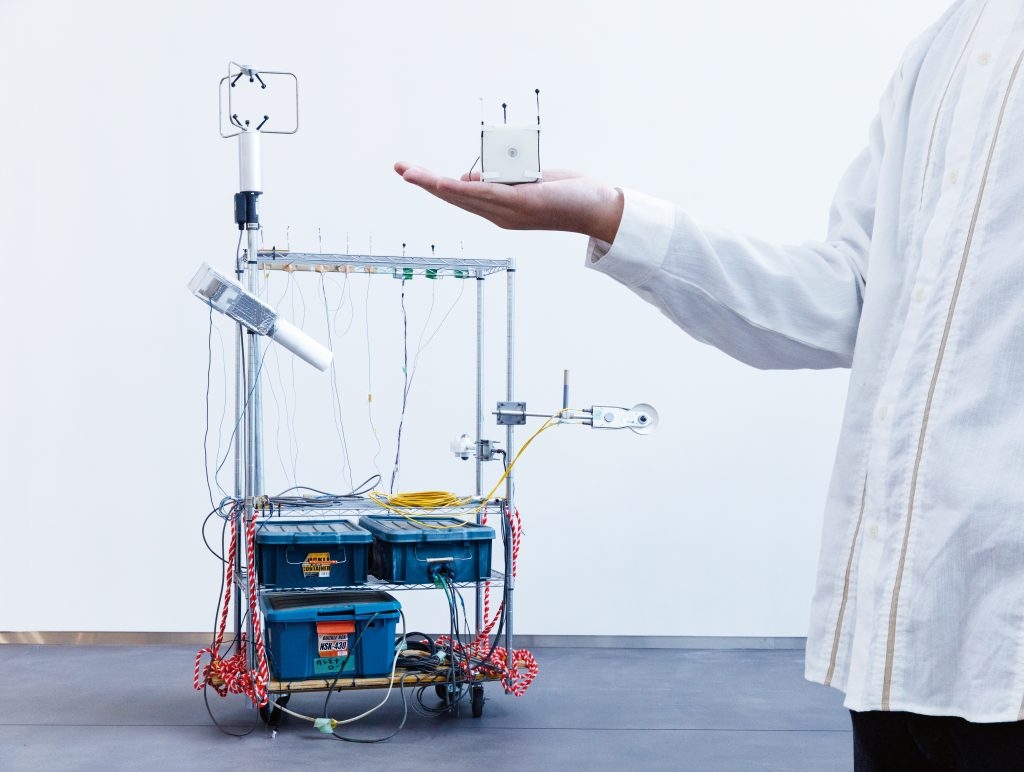The incidence of heat stroke has been steadily increasing in recent years due to global warming and urban warming. The increased rate of hospitalization and death due to heat stroke among elderly individuals, as well as young and active individuals, has become a societal problem. The need for heat stroke mitigation at construction sites, where workers toil under the hot sun, is also growing each year.
The Nakayoshi Laboratory, which conducts research into urban weather, is working on a “heat stroke risk visualization” system that can be used to alert those in vulnerable age groups and workers in heat stroke-prone professions about their risk of heat stroke.
There are five weather factors that need to be measured in order to visualize the risk of heat stroke: temperature, humidity, wind speed, solar radiation and radiant heat.
The ideal system would perform high-density measurements of these five weather factors and evaluate them in conjunction with personal characteristics and conditions (age, sex, clothing and body type) to create a personalized visualization of risk. Achieving this will require more than just weather simulation; it will incorporate electronic circuit fabrication, the thermal analysis of human physiology and many other diverse disciplines.
In order to enable the visualization of the risk of heat stroke, the Nakayoshi Laboratory is pursuing its own proprietary weather sensor technology, producing small, fixed-point sensors that are substantially smaller than conventional sensors.

The Nakayoshi Laboratory is developing even smaller “ultra-small, handy wearable sensors”, and is developing and working to improve the precision of an analysis algorithm that determines the personal heat stroke risk based on the five weather factors.
In the summer of 2021, demonstration testing of the heat stroke risk visualization system commenced with the developed sensors being installed in several locations around Kumagaya City in Saitama Prefecture, the location at which the hottest temperature in Japan was recorded.
For the future, the laboratory will develop a convenient system for determining how at risk you are of heat stroke, based on the five weather factors, and will construct a business model for deployment of this system.
It is Associate Professor Nakayoshi’s hope that “students will engage in interdisciplinary study within multiple fields outside of their own specialization, and experience the joy of tying all the different research strands together.” In order to protect human life from the severe weather changes caused by global warming, the researchers of Nakayoshi Laboratory will continue to pursue a flexible fusion of complex research that will help society to predict and prevent heat stroke.
■ Main research content